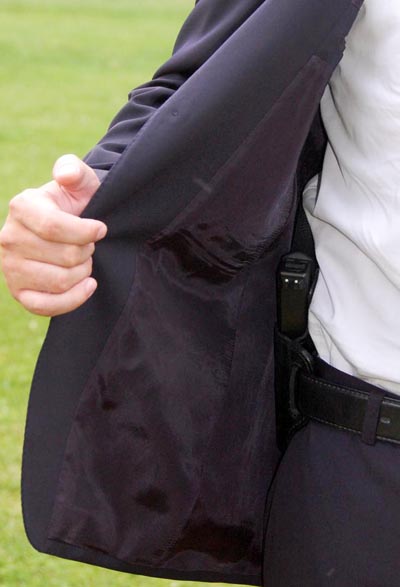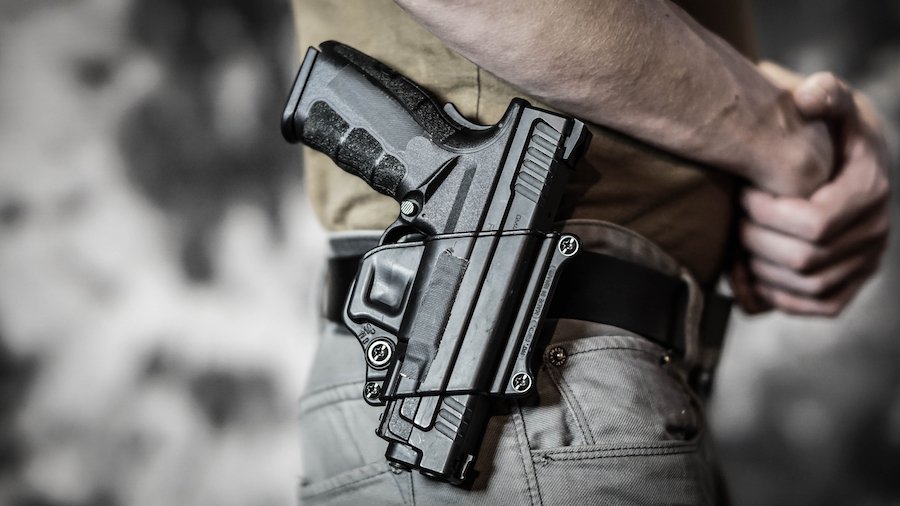Carrying a firearm for self-defense is a deeply personal decision, but choosing between concealed carry and open carry involves understanding both methods’ legal, practical, and safety implications. Each option has unique benefits and challenges, so evaluating which best fits your lifestyle, comfort level, and adherence to local laws is important.
What Is Concealed Carry?
Concealed carry refers to carrying a firearm that keeps it hidden from public view. This could involve using a holster under clothing or carrying it in a purse or bag designed for concealment. The goal of concealed carry is discretion, ensuring your firearm is accessible but not visible.

Benefits of Concealed Carry:
- Discretion: Reduces attention and avoids making others uncomfortable.
- Tactical Advantage: Concealed firearms are less likely to make you a target in a dangerous situation.
- Broader Legal Acceptance: Concealed carry is permitted in more states than open carry, though licensing requirements vary.
Considerations:
- Comfort: Concealing a firearm may require adjustments to clothing and holster selection.
- Practice: Drawing from concealment takes additional training for speed and accuracy.
What Is Open Carry?

Open carry means carrying a firearm visibly, such as in a holster on your hip or shoulder. This method is often chosen for easy access and is legal in many states, though restrictions vary widely.
Benefits of Open Carry:
- Accessibility: Easier and quicker to draw in emergencies.
- Deterrence: The visible presence of a firearm may discourage potential threats.
- Comfort: Does not require specific clothing or adjustments for concealment.
Considerations:
- Public Perception: Open carry can make others uncomfortable or alarmed.
- Legal Restrictions: Some states have strict regulations on where you can open carry.
- Potential Targeting: A visible firearm may make you a target in certain situations.
Legal Differences Between Concealed Carry and Open Carry
The legalities surrounding concealed and open carry vary significantly by state and sometimes even by local jurisdictions.
Concealed Carry Laws:
- Permit Requirements: Many states require permits or licenses with varying levels of training and background checks.
- Permitless Carry: Some states allow concealed carry without a permit, known as constitutional carry.
- Restrictions: Concealed carry often limits specific locations, such as schools or government buildings.
Open Carry Laws:
- State-Specific Regulations: While open carry is legal in many states, some require permits, and others restrict open carry entirely.
- Location Restrictions: Open carry is often prohibited in schools, businesses, or events.
- Brandishing Laws: Even in open carry states, improper firearm handling may lead to legal consequences.
Choosing the Right Method for You
The choice between concealed and open carry depends on your lifestyle, comfort level, and the situations you anticipate carrying.
Factors to Consider:
- Purpose: Is your primary concern self-defense, or are you carrying it as part of a job or hobby?
- Local Laws: Ensure you understand the regulations in your state or locality.
- Comfort and Training: Are you comfortable with concealment methods, or do you prefer the accessibility of open carry?
- Public Perception: Consider how those around you might react to visible firearms.
Practical Scenarios:
- Concealed Carry: Ideal for urban areas, where discretion is key, and public perception may be more sensitive.
- Open Carry: More suited for rural or low-population areas where open carry is common and less likely to cause concern.
Both concealed carry and open carry have their advantages and challenges. The right choice depends on your needs, environment, and comfort with the associated responsibilities. By understanding the differences and practicing safe and lawful firearm handling, you can make an informed decision that best supports your safety and aligns with your lifestyle.

